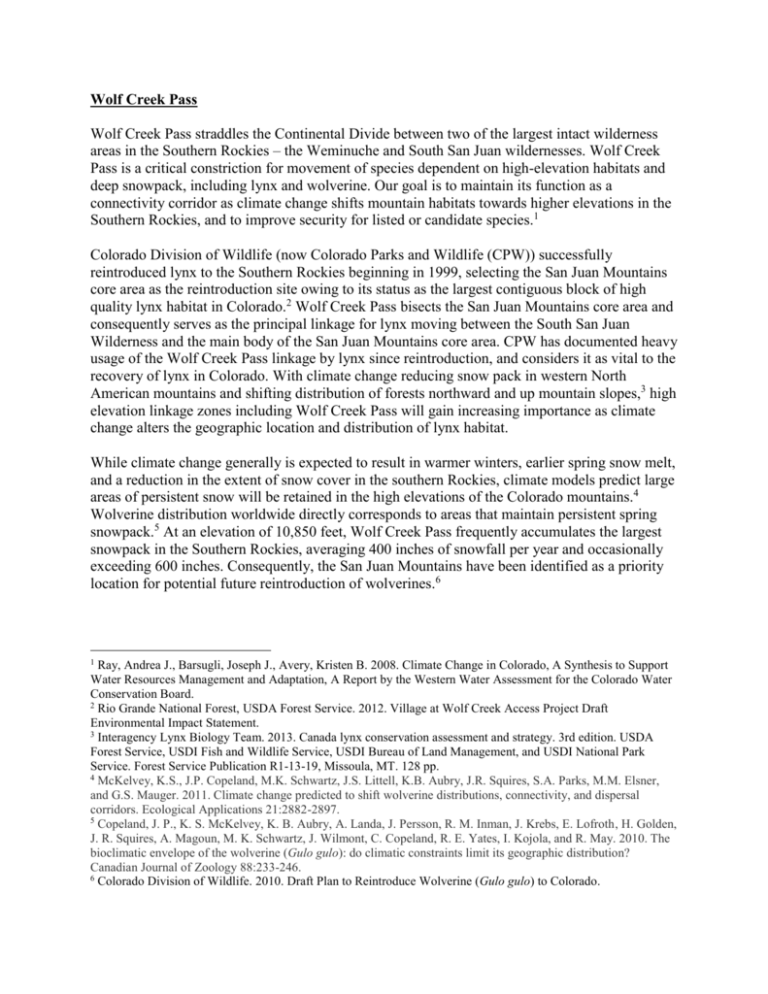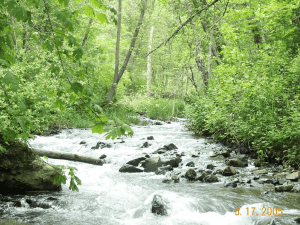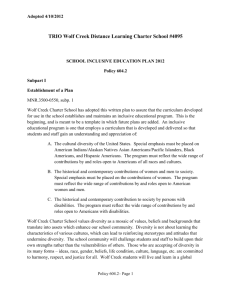Read more here. - Friends of Wolf Creek
advertisement

Wolf Creek Pass Wolf Creek Pass straddles the Continental Divide between two of the largest intact wilderness areas in the Southern Rockies – the Weminuche and South San Juan wildernesses. Wolf Creek Pass is a critical constriction for movement of species dependent on high-elevation habitats and deep snowpack, including lynx and wolverine. Our goal is to maintain its function as a connectivity corridor as climate change shifts mountain habitats towards higher elevations in the Southern Rockies, and to improve security for listed or candidate species.1 Colorado Division of Wildlife (now Colorado Parks and Wildlife (CPW)) successfully reintroduced lynx to the Southern Rockies beginning in 1999, selecting the San Juan Mountains core area as the reintroduction site owing to its status as the largest contiguous block of high quality lynx habitat in Colorado.2 Wolf Creek Pass bisects the San Juan Mountains core area and consequently serves as the principal linkage for lynx moving between the South San Juan Wilderness and the main body of the San Juan Mountains core area. CPW has documented heavy usage of the Wolf Creek Pass linkage by lynx since reintroduction, and considers it as vital to the recovery of lynx in Colorado. With climate change reducing snow pack in western North American mountains and shifting distribution of forests northward and up mountain slopes,3 high elevation linkage zones including Wolf Creek Pass will gain increasing importance as climate change alters the geographic location and distribution of lynx habitat. While climate change generally is expected to result in warmer winters, earlier spring snow melt, and a reduction in the extent of snow cover in the southern Rockies, climate models predict large areas of persistent snow will be retained in the high elevations of the Colorado mountains.4 Wolverine distribution worldwide directly corresponds to areas that maintain persistent spring snowpack.5 At an elevation of 10,850 feet, Wolf Creek Pass frequently accumulates the largest snowpack in the Southern Rockies, averaging 400 inches of snowfall per year and occasionally exceeding 600 inches. Consequently, the San Juan Mountains have been identified as a priority location for potential future reintroduction of wolverines.6 1 Ray, Andrea J., Barsugli, Joseph J., Avery, Kristen B. 2008. Climate Change in Colorado, A Synthesis to Support Water Resources Management and Adaptation, A Report by the Western Water Assessment for the Colorado Water Conservation Board. 2 Rio Grande National Forest, USDA Forest Service. 2012. Village at Wolf Creek Access Project Draft Environmental Impact Statement. 3 Interagency Lynx Biology Team. 2013. Canada lynx conservation assessment and strategy. 3rd edition. USDA Forest Service, USDI Fish and Wildlife Service, USDI Bureau of Land Management, and USDI National Park Service. Forest Service Publication R1-13-19, Missoula, MT. 128 pp. 4 McKelvey, K.S., J.P. Copeland, M.K. Schwartz, J.S. Littell, K.B. Aubry, J.R. Squires, S.A. Parks, M.M. Elsner, and G.S. Mauger. 2011. Climate change predicted to shift wolverine distributions, connectivity, and dispersal corridors. Ecological Applications 21:2882-2897. 5 Copeland, J. P., K. S. McKelvey, K. B. Aubry, A. Landa, J. Persson, R. M. Inman, J. Krebs, E. Lofroth, H. Golden, J. R. Squires, A. Magoun, M. K. Schwartz, J. Wilmont, C. Copeland, R. E. Yates, I. Kojola, and R. May. 2010. The bioclimatic envelope of the wolverine (Gulo gulo): do climatic constraints limit its geographic distribution? Canadian Journal of Zoology 88:233-246. 6 Colorado Division of Wildlife. 2010. Draft Plan to Reintroduce Wolverine (Gulo gulo) to Colorado. Colorado could support 100 wolverines, a 33% increase in the current population of roughly 300 wolverines in the Northern Rockies, thereby providing an important hedge against climate change impacts to wolverines. Regions specifically like the San Juan Mountains – the largest contiguous block of modeled maternal wolverine habitat south of Greater Yellowstone Ecosystem7 – could be an important climate refugia because the high elevation and rugged terrain may remain cold and snow-covered longer than other areas. The area within the Wolf Creek Pass landscape connectivity hub is entirely in public ownership with the exception of a single non-federal inholding. Several administrative actions can safeguard the security of the corridor and improve its function. The private inholding has been the focus of a decade-long environmental analysis associated with a proposed year-round resort development housing 10,000 people atop Wolf Creek Pass that would irrevocably fragment the corridor. The development proposal is pending the discretionary decision of the Rio Grande National Forest whether to proceed. U.S. Highway 160 crosses the Continental Divide at Wolf Creek Pass. Vehicular collisions cause significant mortality for lynx in portions of the southern Rockies – thirteen of the 102 mortalities documented for lynx translocated into Colorado were caused by vehicle collisions. Reduced permeability across Highway 160 or increased mortality could have negative impacts on the continued recovery of lynx in Colorado. An in-depth assessment of wildlife crossing patterns has identified locations for highway crossing structures to increase permeability.8 7 Inman, R. M., B. L. Block, K. H. Inman, S. S. Sartorius, B. C. Aber, B. Giddings, S. L. Cain, M. L. Orme, J. A. Fredrick, B. J. Oakleaf, K. L. Alt, E. Odell, and G. Chapron. 2013. Developing priorities for metapopulation conservation at the landscape scale: Wolverines in the Western United States. Biological Conservation 166:276– 286. 8 Southern Rockies Ecosystem Project. 2006. Linkage Assessment: US Highway 160, Wolf Creek Pass. Prepared for Colorado Department of Transportation.







